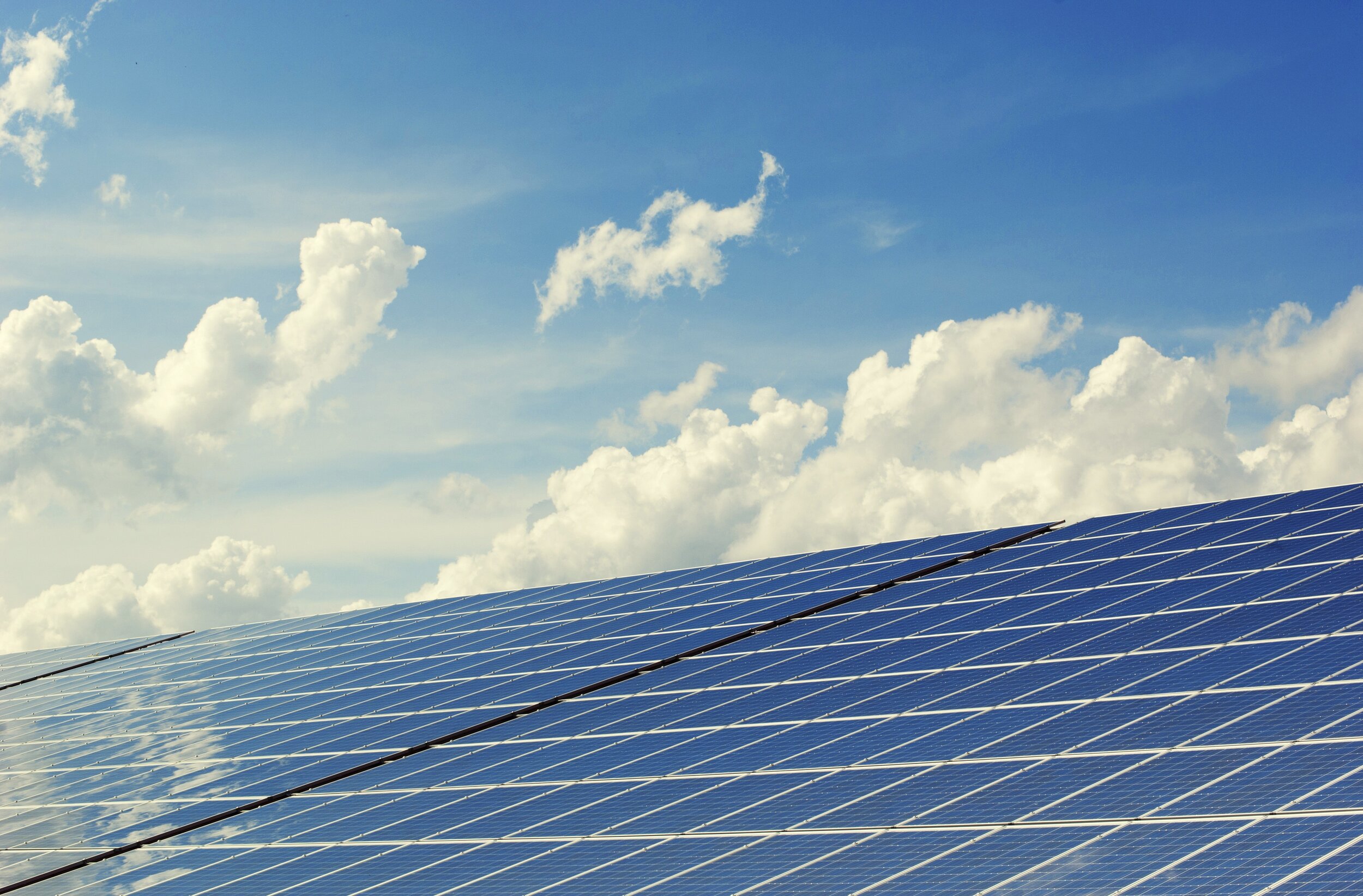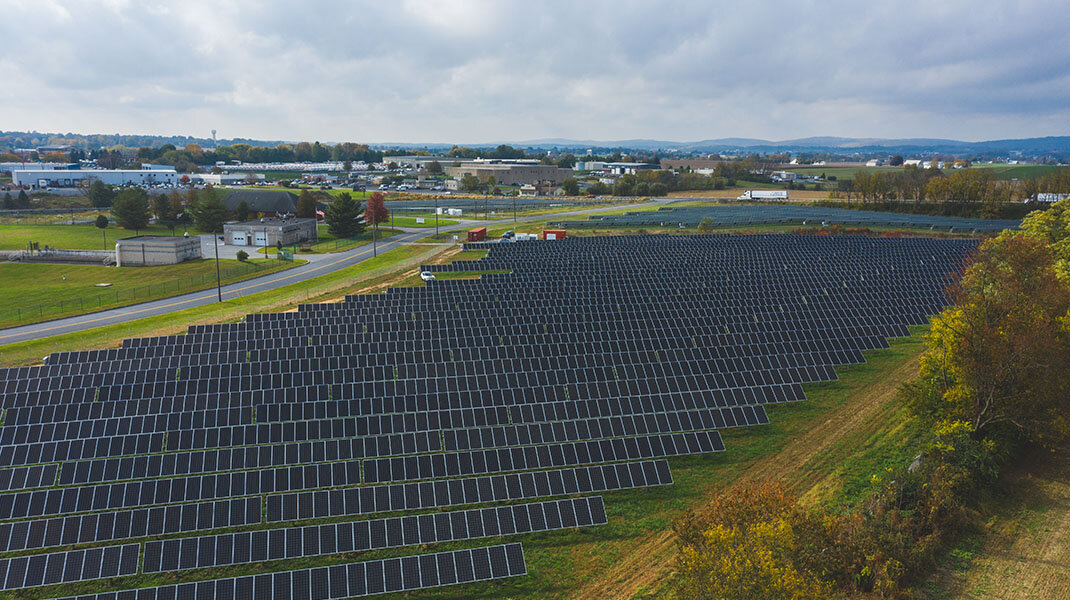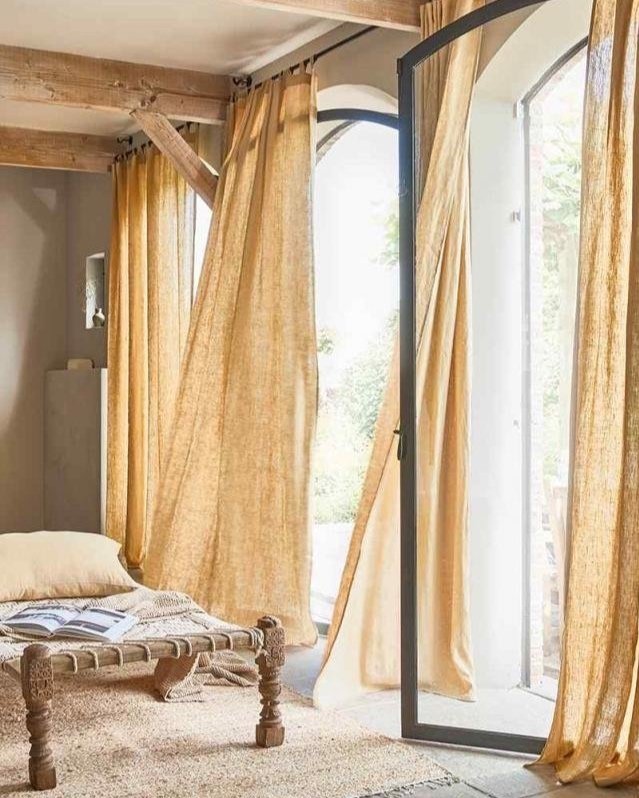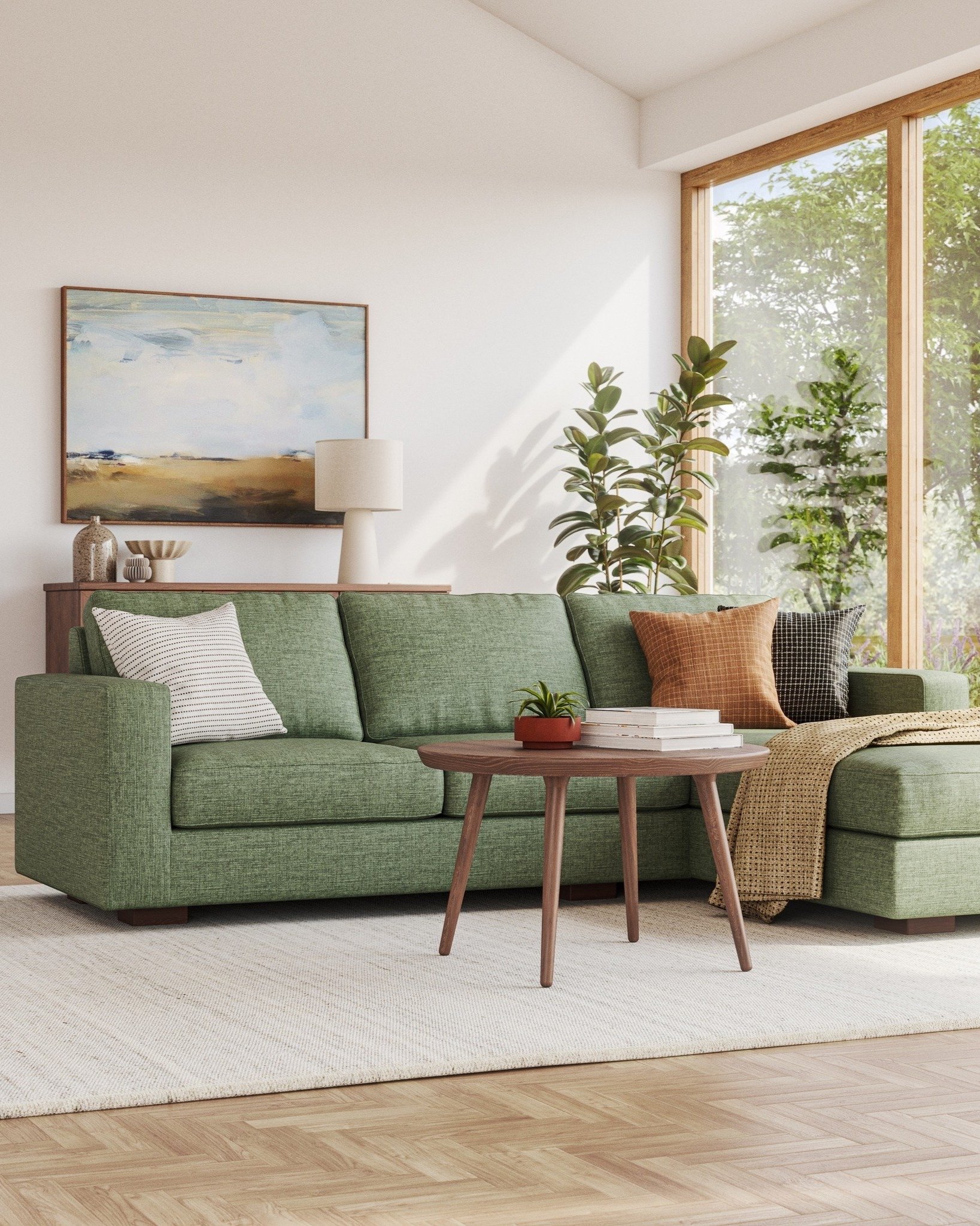What is Community Solar? (A Look at the Pros and Cons)
A GUIDE TO COMMUNITY SOLAR
One of the most dramatic steps we can take to reduce our carbon footprint is to power our homes with clean energy. Unfortunately, because the question of what counts as “clean” energy is such a contentious and complex issue, figuring out how to make the best choice for the planet, as well as for your home and budget, can be an overwhelming task. Researching the options, it can feel like there isn’t a perfect or totally “green” solution, but there are certainly some types of energy that are better for the environment than others.
Solar technology, for example, has been going through some big innovations recently; one major development in recent years is that it’s now becoming more commonly available, even to people who can’t install solar panels on their homes. A new report from the Energy Department suggests that while solar energy currently provides 3% of US electricity, it could provide 40% by 2035, and, combined with wind energy, meet 90% of US electricity needs by 2050. For that to happen, though, the solar energy capabilities (as in, the number of panels installed nation-wide) of the US would need to increase substantially.
What are the most sustainable options for home energy?
Renewable energy, sometimes referred to as green or clean energy, comes from renewable sources; unlike finite natural resources like oil, coal, and other carbon-based fossil fuels that aren’t naturally renewed quickly enough to meet human demand, renewable resources don’t deplete the earth’s supply and also don’t add to climate change because they don’t emit carbon dioxide. In 2020, carbon-emitting non-renewable fossil fuels accounted for approximately 79 per cent of the total primary energy production of the USA. According to the United States Environmental Protection Agency, greenhouse gas emissions in the USA in 2019 were 13 percent below their 2005 levels; we’re slowly seeing a shift in the right direction, but we still have a long way to go.
There are various different renewable energy options out there, all with their pros and cons, including wind, geothermal, hydroelectric, biomass, and solar energy. It’s important to note that renewable energy sources can have very serious downsides of their own; hydro-power dams and wind turbines can have a negative impact on local wildlife and ecosystems, for example. Some energy companies will claim they use renewable or sustainable energy because they use nuclear energy, which, while renewable, is arguably one of the most dangerous and environmentally harmful forms of energy there is because of the amount of toxic waste it creates, and the potential for large-scale accidents if there’s a fault or failure at a nuclear power plant.
The good news, however, is that there are some incredible innovations in clean energy happening around the world. One example is how communities in India are using biogas digesters to turn food waste into a source of energy for electricity; a stroke of genius that helps reduce landfill, cut waste disposal and energy costs, and reduce emissions. The biogas digesters are expensive, but have reportedly been installed in more than 75 locations across India.
Until innovations like this become more commonly available, solar energy is arguably one of the easiest forms of renewable energy to adopt, which is why the US government has been focusing on it so much in their plans to shift away from fossil fuels.
There are a number of things that hold people back from embracing rooftop solar energy, perhaps the largest roadblock being that solar panels take up a lot of space, and need big batteries to store energy and provide a constant supply. Not everyone has enough (or any) viable roof space to make it work, and the fact that you need to have a good credit score to install solar panels, as well as needing to be a homeowner rather than a renter, means that generating your own solar energy is usually a luxury for the privileged few.
I’m lucky enough to live in a beautiful cottage in the UK that dates back several hundred years, and while I love the fact that it’s full of character and history, it unfortunately means that we can’t get permission from the local authorities to install solar panels on the roof because of the historical significance of our home (the intrusive appearance of solar panels are still one of the biggest downsides of solar energy for many people). Until recently, I thought this meant that we wouldn’t be able to use solar energy to provide our home’s electricity—that is, until I came across the concept of community solar.
image from Arcadia
What is community solar?
Community solar projects provide diverse local communities with solar energy, even if they can’t install solar panels at home. Community solar projects make it possible for people who don’t own a home, or don’t have a home with viable roof space, to fund a local solar energy farm that in turn provides them with clean energy for their home at a reduced price.
There are various dedicated community solar projects around the US (and worldwide) you can subscribe to if you’re not able to install your own solar panels at home, and more and more mainstream energy companies are developing ways for their users to opt for solar energy these days, too.
According to the Office of Energy Efficiency and Renewable Energy, as of 2020 about a third of states in the US had enabling policies for community solar in place to encourage and support the growth of community solar projects, so there’s reason to hope that projects like this will grow and become more readily available in the near future.
How does community solar work?
To power your home via community solar power, you have to first sign up to a local community power project and pay a monthly subscription for membership or shares in that solar farm. One community solar project can provide power for hundreds, even thousands, of homes in the local area.
As Joel Gamoran, Vice President & General Manager of Energy Services at Arcadia explains, “As a community solar program member, you subscribe to a number of solar panels in a solar garden that supplies energy to your community.” Your subscription helps fund the installation of the solar panels at the solar farm or “solar garden”, and then you pay your monthly utilities bill on top of that (generally very low) subscription fee. Essentially, your subscription helps crowdfund the solar panels, and gives you money off the clean energy that those panels produce.
Does subscribing to a community solar project save money or cost more?
According to Arcadia, signing up for a community solar project actually saves you money and reduces your monthly utilities bill. “Installing large solar gardens allows solar developers to achieve lower setup costs and a lower average cost per watt that they can ultimately pass down to community solar subscribers whose subscriptions help fund the upfront cost of the installation,” Joel Gamoran told Sustainably Chic. “Every single project we manage at Arcadia is at a 5-10% savings to the traditional local utility rate.”
Meanwhile, the Solar Energy Industries Association reports that utilities using solar energy have now reached a point where they are “competitive with all other forms of [energy] generation.”
Pros of community solar:
There are many benefits to using community solar as your home’s energy source:
Solar power (energy derived from the sun) is renewable energy that doesn’t create carbon dioxide by-product as that energy is generated, although it’s important to remember that the materials for the technology has to be responsibly and sustainably mined and disposed of to be considered fully sustainable.
Solar energy projects can be installed on land that needs to lie fallow before being used for crops, and won’t make permanent changes to the landscape or harm local wildlife while they’re there.
One of the biggest benefits of community solar projects is that it makes solar energy accessible for people living in low income communities. “Not all households have access to clean energy,” Joel Gamoran points out. “In fact, two out of three renters, apartment dwellers and homeowners in the U.S. don't have access to or can't afford rooftop solar, including poor and BIPOC communities… Community solar will help democratize the transition to clean energy.” Anyone living in the locality of a community solar project can use this solar energy, regardless of their economic status or living situation—community solar projects mean that you don’t even need a roof to access solar energy anymore.
The developers at the solar farm are responsible for the installation and maintenance of the solar panels, and they guarantee that your electricity supply won’t cut out.
Generally, once a community solar project starts generating energy, it also starts generating savings which you, as a subscriber, will see reflected in lower energy bills.
Cons of community solar:
So, what are the downsides to community solar (and solar energy more generally)? If you’re thinking this all sounds too good to be true, here are some potential cons to consider:
Community solar projects are, by nature, very localized. This means that not everyone will have access to a community solar project if there aren’t any running in their local area. As the concept of community solar catches on and our awareness of the importance of clean energy grows, however, you can expect to find more options near you, so keep an eye out for new projects near you, and find out what community solar projects are available near you using Arcadia’s zip code checker.
As a subscriber to a community solar project, you won’t get the tax benefits that owners of personal rooftop solar panels get.
Solar energy requires large amounts of space—big surface areas—for solar panels to collect and store the energy generated from sunlight in batteries. The best practice for large-scale solar energy projects is to find multiple ways to use the land, for example by positioning solar panels such that animals can be let out to graze underneath and in between panels.
Many people have concerns that solar panels are unsightly—though, they’re arguably less unsightly than a traditional electrical power plant. It can be hard to get permission to install solar panels on protected land or historical buildings.
Solar panels (and other “eco” technologies, including electric cars) require batteries which have a limited life and have to be disposed of very carefully, because they contain materials and substances that are harmful for the environment. According to the Institute of Energy Research, batteries are expensive to recycle. The US doesn’t currently have systems in place to recycle this kind of technology on a large scale, meaning that as more people opt for solar energy, we also have to campaign for adequate local recycling facilities.
The most striking downside of solar energy in general does seem to be the tech waste that it produces, especially as newer and more effective models of solar panels are developed and people inevitably want to replace perfectly functional panels for the latest model. Some estimates suggest that there’ll be well over 70 million tons of solar panel waste worldwide by 2050. It’s not all bad news, though; Bloomberg reports that the market for used solar panels is growing fast, and that re-used solar panels are already powering communities in the developing world.
All in all, switching to clean energy via a community solar project is an easy and affordable positive step to take for the environment (as long as there’s one available in your area), and will dramatically reduce your household’s carbon footprint. As we work towards a carbon neutral world, supporting solar energy, and campaigning for more innovation and transparency in the clean energy industries, is one major way to live a more sustainable life.
About the Author
Sophie Caldecott is a freelance writer living in a cottage on the edge of the moor in the South-West of England. She writes about grief, empathy, ethical fashion, and the things that connect us and make us human. You’ll most likely find her cozied up by the fire with a mug of hot chocolate and a good book.
MAKE SURE to PIN THE PHOTO BELOW TO SAVE THIS POST FOR LATER!
WANT MORE SUSTAINABLE BRANDS? VISIT OUR BRAND DIRECTORY!
Our Brand Directory is home to hundreds of sustainable brands, from makeup to cleaning supplies, from underwear to shoes. We have broken everything down by category for easy shopping, along with discount codes unique to Sustainably Chic viewers.



































